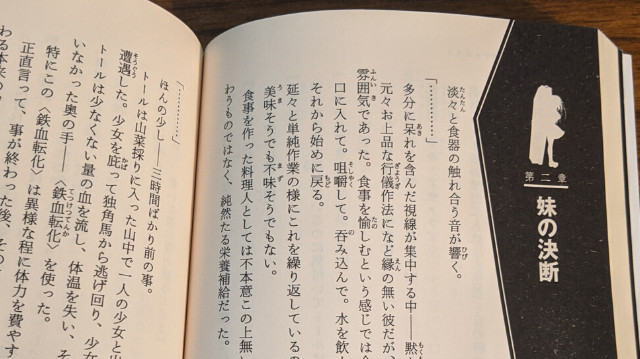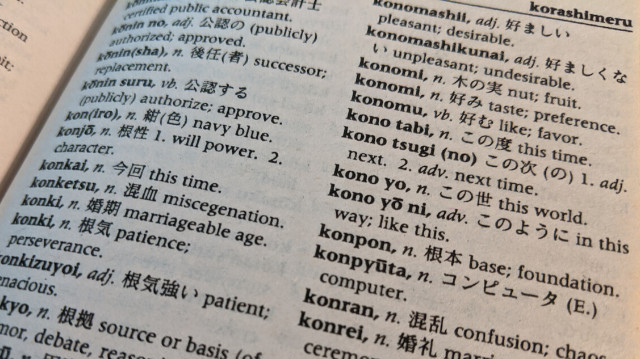There are a lot of languages out there that have varying degrees of difficulty when it comes to learning them. But how about the language of Japan? Is Japanese a hard language to learn?
Well, from the viewpoint of a native English speaker, Japanese is considered one of the hardest languages to learn by the Foreign Service Institute (FSI). They say it will take thousands of hours to learn it to the point where you are proficient in the language.
So what makes it so hard?
I will cover the different aspects of Japanese and explain why each one is hard (or easy) for people to learn. I’ll also show you a trick to making the whole process a lot easier than most people realize.
The Sounds Of Japanese
The sounds of Japanese are actually one of the easier parts of the language for native English speakers to learn. The reason is because Japanese actually contains fewer sounds than English does.
That being said, there are a few sounds that are unique to Japanese that you will have to learn in order to have a good accent in the language. This is primarily in the “R” category, but it also applies more generally like how consonants are pronounced.
The trickiest thing about Japanese phonetics is actually the pitch accent.
The basic idea is that the accent of word in Japanese is represented by changes in pitch. Some words will go up and others will go down.
In English, the accent of a word is represented by stressing a particular syllable, so the concept of not stressing syllables and instead raising or lowering a pitch is a new one for us.
One way that we do this in English is at the end of a sentence when we raise the tone to indicate a question, or inflect it down to indicate a declarative statement.
That’s similar to what I’m talking about, but it really only scratches the surface.
Here are some great pitch accent resources that you can use to help work on this aspect of Japanese.
The Writing System Of Japanese

In English, we only have 26 letters that make up our alphabet. Although, I suppose you could consider it to contain 52 characters since we have both upper case and lower case versions of each.
At any rate, the Japanese language is quite a bit different.
They have two separate scripts called hiragana and katakana that each contain 46 base characters, and some slightly modified ones as well.
The good news for these two “kana” systems is that each character only represents a sound (usually a consonant and a vowel such as “ko”).
Also, hiragana and katakana represent the same sounds similar to how our lower case and upper case letters do.
For example:
- ぬ = nu
- ヌ = NU
The first example above is hiragana and the second one is the same sound, but written in katakana.
There are particular reasons for having these two separate scripts, but it’s beyond the scope of this article to cover them fully.
It’s actually not that hard for people to learn the kana.
But it is hard to learn kanji.
What are kanji? Well, to put it simply they are Chinese characters that represent both sound and meaning. Many of them actually have multiple potential sounds and meanings, so for one character you have to learn a lot of information.
For example:
- 家 = “ie” and means house
- 鳥 = “tori” and means bird
To make matters worse, there are literally thousands of them!
The Japanese government has officially states that the “jōyō kanji” (daily use Chinese characters) are the 2,136 that everyone has to learn in school to be considered literate.
So if you want to learn Japanese, you need to learn at least those. But from what I’ve heard, most Japanese university students know around 3,000 and most highly educated people (so like, professors and such) know around 5,000.
Learning kanji is considered one of the hardest parts of the language because there are so many of them and a decent amount of them are context dependent.
Another aspect of the Japanese writing system is that the traditional way of reading is to start of the top right-hand side of the page and then read down.
This is very different from English where you start at the top left-hand side and read to the right.
That being said, there are a lot of times (like on the internet) where you will read Japanese in the same order as you would English.
The Grammar Of Japanese
The Japanese language is structured very differently from English. I think this is one of the main causes of difficulty for language learners.
Not only do you have to learn new words (which we’ll cover next), but you also have to learn the correct way to order those words so that your sentences are comprehensible for the listener.
Let’s take an example sentence to illustrate the differences between English and Japanese.
- English: I bought a car.
- Japanese: 車を買いました。
Taking a look at the grammar of this Japanese sentence, we see a couple of things.
The first one is that the word order is different from English. In English, we put the verb (bought) in the middle of the sentence, but in Japanese it goes at the end (買いました).
If we were to literally translate the Japanese into English it would be “car, bought.”
This brings us to the next point: omissions!
The Japanese language is considered a very context heavy language. Which means certain information can be left out of sentences when it is understood by the listener.
So if you’re talking to your friend about a car you bought, then you can leave out the “I” part when speaking because your friend knows that it was you.
Also, the English articles “a, an, and the” don’t exist in Japanese, so you’ll never say an equivalent.
Something else that is new for English natives is particles.
In the example above, there is one particle which is を. What particles do is attach to the ends of words and help the listener understand it’s function.
There are a lot of them, and in this case the particle を tells us that the word it’s attached to (車 car) is receiving the action of the verb, which is this case is “bought.”
The last thing that I’ll touch upon is that nouns in Japanese can be both singular and plural. In other words, 車 can mean “car” or “cars” depending on the context.
Generally speaking, when a person is talking about a specific number of something they will give the exact number with something known as a “counter” so that the person knows exactly how many there are.
In the sentence 車を2台買いました we see that “2台” gives us both a number and the counter that is used for vehicles.
To sum up the grammar of Japanese, it is very different from English and has a lot of aspects that will be completely new for anyone learning the language.
Leaning Japanese isn’t as simple as learning some new words. Rather, you have to learn a completely new way of thinking and expressing yourself through the new structures.
The Vocabulary Of Japanese

Learning the words of the Japanese language isn’t really a big deal in and of itself… It’s just that there’s so many of them!
In a lot of cases, the Japanese language has multiple words for the same thing. There are two primary reasons for this which I will go over now.
The first reason has to do with levels of formality. The culture of Japan is based on very clear hierarchies that determine which words you use when speaking to others.
In order to make things simple, I’ll divide the language into three categories:
- Casual
- Polite
- Respectful
In order to see how the situation changes the words, let’s use the Japanese word for the verb “to go.”
If you are talking with your family, you can use the casual version of this word which is 行く. Also, if you are speaking to someone who is lower in status than you (like a teacher speaking to their student) then you can also use this word.
If you’re among equals, or people that you don’t know all that well, then you would use the polite version 行きます.
As you can see, the root of the word stayed the same, but the ending of it got longer. This is the general rule: shorter versions of the word are more casual, and longer versions are more formal.
As for the third situation, if you were a clerk speaking to a customer then you would use the respectful version of the word which is いらっしゃいます. In this case, the word has completely changed.
Respectful language can actually be broken down into several different categories of it’s own, depending on if the speaker is raising the status of the listener directly or indirectly, but I’ll leave it at that for now.
The other reason why the Japanese language has multiple words for the same thing is because they have imported a lot of words from other languages.
Originally, the Japanese language did not have a writing system, so the adopted the Chinese writing system. When this happened, they adopted thousands of Chinese words into the Japanese language.
Although they did modify the words to fit better with their sound system, you will typically encounter words that use the original Japanese reading (kun’yomi) like 泳ぐ “oyogu” or the imported Chinese readings (on’yomi) like 水泳 “suiei.”
Both 泳ぐ and 水泳 mean “to swim” in Japanese, but they are spelled and written differently. Although, you probably noticed that they both share one character.
Generally speaking, the Chinese words are seen as more “high status” or a formal way of speaking, which the Japanese words are seen as more normal, day to day life type of words.
Adopting new words into Japanese has happened again more recently (the last century or so) with English words. I read one estimate that there are over 20,000 English loan words in Japanese!
For example, the native Japanese word for “camera” is 写真機 (shashinki) but almost all Japanese people say カメラ (kamera) which is the English loan word.
Loan words like this have a “modern feel” to them and contain a sort of cool factor in the Japanese culture. This has lead to a lot of younger Japanese people using English loan words instead of the native Japanese ones whenever they can.
Here’s the point of this entire section: The Japanese language has a lot of different words for the same things, and it’s necessary to learn them due to the different nuances and meanings that each one brings.
How To Make Leaning Japanese Easy
This whole time I’ve been talking about the difficulties of leaning Japanese, but the reality is that leaning Japanese isn’t really “hard” so much as it just takes a long time.
The reason is because you need to learn a lot of things that are very different from English. But once you get into the swing of things, it’s actually not that big a deal to learn a new word, learn some new characters, and understand sentences that use a different structure.
I think that the trick to learning Japanese is two-fold:
- Use an effective method
- Make the process fun
Obviously the more effectively you study the language, the quicker you will learn it. That makes sense.
As for making it fun, I’ve found that when you enjoy the learning process you not only spend more time each day doing it, but you actually acquire the new information better.
To that end I would recommend checking out my review on LingQ which is the most effective way I’ve ever found for learning Japanese.
Thanks for reading, and let me know if you have any questions or comments!
Further Resources for Learning Japanese:
#3 Get My eBook (Secrets to Learning Japanese) for Free

またね!

I actually enjoy reading manga and some Japanese cartoons so this was pretty interesting to read, not to mention I really would love to visit Japan someday, it’s just such a drastic cultural difference to the West, ya know? Although I think I would focus on learning to speak Japanese over reading it at this point. Thanks for creating this site, I will bookmark it for later reading
Yeah, Japan’s culture is very different from western ones. And it’s definitely a trip worth taking for anyone who like manga and anime! Focusing on learning how to speak Japanese first is smart. That’s how everyone learns their first language when they’re young and it seems to work pretty well!
I have always thought about the difficulty of learning new languages, but I guess you are right, everything will get easier after a while. I can totally relate to your example about learning guitar, since I am a musician myself.
But I never considered actually reading a new language. As a foreigner living in Japan, can you get away by just being able to speak fluently? Or do you need to be able to read as well?
Great article!
Hey Farhan, I imagine that you can get along pretty well with only speaking as long as there are people around you to talk with and ask questions. Although just like in English, you miss a lot when you can’t read.
And hey, that’s pretty cool that you’re a musician too!
Hello Nikku, I guess that is Nick for Japanese right? I have read your website which has great visuals and colors. This website has given me greater insight of the Japanese language. I am currently interested in learning other languages and Japanese is one of them. I will be checking you website in the future to try to master the Japanese language especially the Kanji because that’s the one that drives my brain crazy. It is wise to state tasks are hard before they become easy by practice and/or research which can be applied to many aspects of life. For example, very young humans used to have a hard time walking but they mastered it because of persistence and constant practice.
Sincerely,
Elias
Hey Elias! You are correct, Nikku is my name in Japanese 🙂
Thanks for the kind words about my site! I try really hard to make it nice and easy for the people who visit. And feel free to come back anytime to learn some Japanese. I try to update it with new stuff every couple days.